...of poverty and the sacrifices of womenStella Dallas (1937)Overview: King Vidor's Stella Dallas (1937), is a remarkable portrayal of the lesser used genre of "maternal melodrama". This film refines the genre and makes a breakthrough with its feminism, emotion, and powerful acting. The noir film Stella Dallas features Barbara Stanwyck, Anne Shirley, John Boles, Alan Hale, and Barbara O'Neil. There were a lot of maternal melodramas in the post recession era in the twentieth century, but most are largely forgotten. Stella Dallas (Barbara Stanwyck) is but one of many unsung female heroes who sacrifice, yet always prevail, in maternal melodramas such as Min and Bill (1930); The Sin of Madelon Claudet (1931); Madame X (1937); and Forbidden (1932) to name but a few of this rich, largely forgotten and dismissed treasure-trove. -Gwendolyn Audrey Foster, on Senses of Cinema The unique and revolutionary story was in fact written by a women. Olive Higgins Prouty, along with being. a poet, was the successful author of the novel Stella Dallas, in 1923. Vidor felt the need to use the popularity of the novel and the common familiarity of Prouty's work and abridge the novel with cinematic usage. The film highlights the best remembered sentimental moments from the novel, which led to a large female audience to resonate with the story of Stella. The film was indeed a great example of the staggering concept of self-sacrificing love, which is motherhood. The acting, the screenplay, and script, bring the entire story and its narrative to live and to resonate within the audiences heart. The cinematic effects and camera angles piercing into the in the maternal character's reactions, allows for this piece to be a real gold winner. Barbara Stanwyck, who plays the lead of Stella, won an Academy Award for Best Actress in a Leading Role. Anne Shirley, who plays Stella's daughter Laurel, too won an Academy Award, for Best Supporting Actress for this role. The film comes into play with a strong central claim: feminism, or the lack thereof. The film comes out during a major economic crisis, The Great Depression, therefore the character of Stella can be symbolic to hope and perseverance. The jolly and cheery personality of Stella was a tribute to all of the women during those times that had very little rights to freedom. The message of the film delivers very strong in this piece. The story of judgement, society, and motherhood was given light and life when coupled with cinematography, film, and characters. "The sacrifice is the main theme in the movie...But the noblest sacrifice will be made by Stella only. She is the maximum example of the mother who lies and endures suffering in order to see her daughter triumph." -Leticia Magalhaes, on Medium Cinematography: The official filming for Stella Dallas started in 1937 in California at the Goldwyn Studios owned by the producer Samuel Goldwyn. The director, Vidor was confident in the film, he said "We had a good cast, great photography and everything seemed to work well." Goldwyn did not like the shots at first but reran them only to say "they were wonderful", and so the production of the film continued. Vidor had a very successful career as a director, specifically "silent movies", in which the impactful scenes would be boosted by the characters acting. Now that is film in art form! The very intimate moments between Laurel and Stella were done so well cinematographically that if the audience were to mute the film, they would still be able to feel the ambience that was created with the acting, camera angles, and soulful acting. The train scene and the final scene of the film were so powerful. The literature of the story being showcased so tremendously, was truly a work of art. The directors visions were displayed so well that even about 80 years later, one can admire the careful cinema work. Take another look at the train scene, and if we look closely at Stanwyck's deep expression, we can feel the hurt and guilt she may have felt. This scene stands out, the ambience, lighting, set, and of course Stanwyck's expressions, all so heartful. The ending scene, too, gives off an array of deep emotion, solely by the cinema work and acting of Stanwyck. The film naturally emotes more feeling than the novel. "The audience reviews attempt to express, in simple cognitive terms, the emotive power of the film, which becomes the dominant catalyst to reading Stella Dallas. The narrative of the film presents Stella as a person with a zest for life. She enjoys meeting people, dancing, and above all, being herself"- Anis Pervez, from Off Screen The final scene was put in a side-to-side comparison, by Catherine Grant, with the two other film adaptations of Stella Dallas, click the button below to view the cinematic differences. Plot Summary: The film centers around Stella, who is the daughter of a poor mother played by Marjorie Main, who seems to represent the lower class home mother. Stella lacks education, class status, and societal prestige, but this does not stop her from dreaming and being determined. She is too confident to end up like her mother. Stella fixates her eyes on a wealthy mill owner, Stephen Dallas, played by John Boles. She ends up taking advantage of his vulnerability after losing his love interest, Helen, to someone else. Stella and Stephen marry and Stella gives birth to their daughter, Laurel. Stella marries for the perks she gets with marriage, as did many women in the 1900's. Marriage was not necessarily romantic, rather a way for women to move up and access freedom and status, so Stephen was not much more than a source of income for Stella. Stella falls deeply in love with her daughter Laurel. She aims to give Laurel everything that she had not gotten for herself. Stella is extremely selfless when it comes to Laurel, she protects her and sews her clothing even if she can afford the clothes. They become very close and deepen their bond and even sleep in the same bed. Stephen does not live with Stella, as they are not in love particularly. As Laurel grows up she spends more and more time at her father's house. Her father is wealthy and privileged and so is the company he keeps, therefore, Stella does not fit in. Stephen wants to get married to the women he fancied, Helen, as he hears that she has been widowed. Stella refuses a divorce but eventually agrees seeing that it would be more fit for Stephen. Helen is kind and respectful, not a typical extramarital affair. Laurel and Stella are not exactly high society so they have to endure degrading remarks. Laurel eventually starts to give into society and becomes anxious of her mothers class status, feeling self-conscious, Laurel can no longer ignore the way her mother is seen. Helen and Stella come to conclusion that it is better for Laurel to stay with her father and join the upper class. Stella knows that Laurel would not leave her willingly, so she sacrifices her self-respect and stages a scene with Ed Munn acting like she does not love her daughter but loves Ed instead. This hurts Laurel and she moves on to her father's home and eventually marries her love interest Richard. Helen asks her worker to open the curtains, intentionally, knowing that Stella will come to watch her daughter marry on the night of her wedding. Stella watches her daughter's wedding and asks to stay until the groom kisses the bride. We see her pining and tearing but tears of joy of course. Stella proves to be the ultimate self-sacrificing mother. She does not take defeat, rather glorifies a moment of triumph. Adaptation: The film adapted from the 1922 novel titled Stella Dallas, by Olive Higgins Prouty. The genre of maternal melodrama comes from the the subgenre of "women's pictures", or movies that are catered towards passionate feminist women. Prouty's novel became one of the first radio soap operas, creating a melodramatic mood that continued onto cinema and television. The story mainly inspired three adaptations: a silent film in 1925 directed by Henry King, then the 1937 version with Barbara Stanwyck, and a 1990 version starring Bette Midler. Because of its innovative and atypical storyline, Stella Dallas went on to a lot of success and lived in various forms. This specific film, the 1937 piece, was so popular that it inspired a radio series that adapted the same year. It was a fifteen minute show in New York, and then later it was picked up by NBC Radio, where it ran on weekday afternoons all the way until 1955. Although the radio show did show success, the author was not pleased with the adaptations and reinventions. "Prouty was not happy with the radio show because she did not like the treatment of her characters and had not approved the sale of broadcast rights." -TCM The novel was very successful, as were the adaptations, but in particular Vidor's 1937 adaptation of Stella Dallas was quite a piece and definitely a cinematic work of art. The actresses did a wonderful job placing emotions on the screen and the screenplay was phenomenal in capturing the essence of the despair. Film is a cultivation of a lot of aspects in order to make it art, the scripted literature, skillful acting, and careful direction, all made this film exquisite and wonderful. Wendy & Lucy (2006)Overview: While keeping in mind the context of the film, The Great Recession of '08, another maternal melodrama is given way with this contribution by Kelly Reichardt, called Wendy and Lucy. The film follows a similar structure to Stella Dallas, of perseverance and sacrifice. Wendy and Lucy is a 2008 drama film adapted by Jon Raymond's short story called Train Choir. This film stars Michelle Williams, as Wendy. The film did get a lot of attention and screened at several film festivals. The premise involves a homeless women trying to travel to Alaska in hopes of opportunities, but is faced with a heart wrenching dilemma. This film was so American and so real. It was as if the film was in fact filming the recession itself. The film posed many similarities to Stella Dallas. Stella is a maternal figure to Laurel, and Lucy is analogous to Laurel in the sense that she brings out the maternal instincts in Wendy. Both films have heart wrenching endings in which the "mothers" make the ultimate sacrifice due to the division caused by their socioeconomic status. The striking resemblance in both the narratives is in the triumphing ending scene. One can compare the scene in which Wendy gazes at Lucy, touching her face, but not able to hold her from the other side of the fence to the scene in which Stella lovingly watches her precious Laurel wed, insisting on watching the newly weds kiss. The hope for better future leaves both women walking back empty handed but strong. Wendy makes her decision after seeing Lucy's foster homes conditions, and decides then that her precious canine partner deserved better, just as Stella rests assured knowing that her daughter is in the hands of a upper-class, well respected family. The maternal instinct knows that the best is security and shelter. Cinematography: Kelly Reichartd keeps it extremely simple with this piece. The cinematography was astonishing and real. Realism is an underrated genre of filming in which the view can resonate with the experience that the protagonist is enduring. The cinematography was skillfully captured by Sam Levy with Reichardt's careful examination and requirements. Another key characteristic of this film that can be picked up is the music, and the lack of. The films only music is really quiet, and sometimes humming by Wendy. Since it is essentially a train choir, there is a lot of background sounds of trains. Reichartd says this is because during those times, in most of America you can hear the sound of a train when you are traveling. Since the film depicts Wendy on a journey, the director deemed it appropriate to film multiple train shots and sounds to give it that travel film feel. The setting of the film is mostly natural with little to no set, rather using real and actual locations to present a realism sense of ambience. The colors are rather muted, the scenery is mild and natural, and the actresses acting is simplified and considerably reduced for the most part. The director's usage of unusual panning shots gives it a heart breaking feel with the slow camera angles. All of these elements come together and add to the depth of the cinematography and film appreciation. Loud music and flash elements would have distracted the audience from the seriousness of the tone and the day in the life of an actual recession survivor. Plot Summary: The film is focused on the Great Recession and from that, a victim of poverty, Wendy Carroll. Wendy has decided she wants to travel from Indiana to Alaska in hopes for employment opportunity at a cannery. They unfortunately become stranded in Oregon as Wendy's car breaks down. Wendy seems to come from a background of poverty and with not a lot of family support. Lacking the funds to repair her car or feed her dog Lucy, she decides the only way to go about the situation is to shoplift. She goes to a convenient store and leaves Lucy outside as she attempts to shoplift some food for Lucy. She gets caught by the young clerk at the store, who enforces law regulation and calls the manager. She is then taken to the police station where she gets finger prints, and taken to settle a fine. After she pays the fine, which she could barely afford, she is released from police custody and hurries back to the grocery store to retrieve her dog Lucy, but to her despair, Lucy was no longer there. She fails to find Lucy despite her many attempts. She keeps trying but has very limited resources. She meets this kind security guard and he lets her borrow his phone. They talk a little bit about how the American system is flawed and designed in a way where jobless people will struggle to get a job and homeless will be homeless. Wendy then discovers that Lucy has been taken to the dog pound, but has been rehomed and fostered by a family. Wendy then goes to pick up her car from the mechanic but learns that against her luck, her cars engine needs to be replaced, which will end up costing more than the actual value of the car. She decides to leave her car which was a very hard choice, but the car was not worth it. Now she is truly homeless and without any support. She calls her sister but does not ask for help, which shows that she does not have good connections with her family. She is nearly penniless but still goes to the lengths to find her dog. She reaches the home where Lucy now resides, she notes how well the home is compared to what she herself can offer Lucy and makes the hardest decision. She sacrifices her security and happiness to give Lucy a home that can show her a brighter future and not one filled with uncertainty and further poverty. The heart wrenching scene was captured so beautifully that it leaves the eyes dewed. The film ends with Wendy boarding a train headed to Alaska. With pain of departure in heart, she did what she had to do as a caretaker and provider. Although not much is said about Wendy's background, a lot can be inferred. She has family contact but does not reach out to them for help, which shows that she may have had a troubled home, domestic abuse, sexual abuse, or a rebellious youth? She is easily startled and hesitant to place her trust in strangers or intermingling with the mixed gender gatherings. This could lead back to her mistrust in men. She also keeps a dog, despite her financial conditions. This heavily indicates the need for security, which goes back to being possibly sexually harassed or abused. She has her hair cut short, or boy-like, as if she intends to appear unattractive or not feminine enough to be the object of someone's eye. There is very little we know about Wendy, but with the ending of the film, it is more than certain that she is a maternal figure to Lucy and has a heart heavy with love. Adaptation: The film was an adaptation of a short story by Jonathan Raymond called Train Choir.
The theme of a the film was sacrifice and very close to maternal melodrama, similar to Stella Dallas. Wendy and Lucy was an updated version of the earlier maternal melodrama that posed a similar ending. The inspiration of the film also comes from simply the reality of an American's life during the Great Recession of 2008. The film depicts "man-made true events" and portrays them in the light of an emotional drama film. The genre can be realistic fiction as it is adapted from realistic events that could happen to anyone. A car stopping, being abandoned, the Walgreens parking lot, shoplifting, losing a pet, and the list goes on. A lot of the film was adapted from real life events, making it an authentic work of art. Filming this movie was budget friendly and simply put. The theme can be put as economic status cause a drift between loved ones, just as in the case of Stella Dallas.
5 Comments
Both film adaptations mimic the same narrative theme: "A simple cautionary tale, a scientist delves into that which man should not know and suffers the consequence." -Nathan Kamal, Spectrum Culture The Fly (1958) Overview: The Fly (1958) is a scientific-horror film produced and directed by Kurt Neumann. The gothic film features David Hedison, Patricia Owens, Vincent Price, and Herbert Marshall. The screenplay and story were based on a short story written in 1957 called The Fly, by George Langelaan. The film depicts a rather disturbing and gross story of a seemingly sane scientist who is accidentally transformed into a horrendous mutation due to a mishap involving a common housefly. The science in 'science fiction' comes from the way the directors added scientific experimenting and biological disintegration of both entities in the molecular transporter invented by aforementioned scientist. Sounds technical, right? Well, although the story seems very unique, original, and revolutionary, the directors can pay credit to Mary Shelley, author of, you guessed it, the world renowned, Frankenstein. Mary Shelley practically invented Sci-Fi horror with Frankenstein in 1818. Frankenstein not only inspired various adaptations of its own story but more and more scientific horror stories involving the curiosity of man to literally bring out the worst in himself. Everybody has heard of the popular monstrous anomaly that is the monster of Dr. Frankenstein. The Fly and the mutational monster featured in the 1958 film are also inspirations of Shelley's 1818 story along with the 1957 short story by George Langelaan. " Frankenstein, more than most literary sources, lends itself to an incredibly wide range of adaptations, and audiences never seem to tire of the Frankenstein saga." -Lynette Porter, Pop Matters. To provide insight on the time of the film, the film was released shortly after political tensions across the world arose, such as the atomic bomb that was dropped in Hiroshima. Many had feared the radioactive side-effects and other feared science and its dangers in general. Hollywood took the opportunity to prey of viewers fear of the beastly world of science and presented it in a horror fiction light. The film showed improper mutation and a teleportation machine in which light rays could have a radioactive decay effect if the viewers did not cover their eyes. There was a lot of anxiety and fear over the nuclear warfare incident, and this film and its subtle additives preyed on that curiosity and ignorance. Although the filming can make a movie have a certain thrill, the time in which is what released and in what dynamics the film is brought to the audience, definitely plays a factor in the movies success. Film art encompasses all components in its attempt to resonate and divulge into the viewers feelings and thoughts. Cinematography: In the era of black and white films, to audiences surprise, Neumann's film was developed and delivered in beautiful colored tones. The film portrayed different types of color selections, pastels and neutrals along with a significant neon palette on the actual teleportation machine. The cinematography delivered a chiling gothic vibe. "And the gorgeous cinemascope DeLuxe colour, make it eminently re-watchable six decades later…"-Kim Vertue, Frame Rated A very interesting and remarkable use of camera was in the rare instances where we see the Fly-Human hybrid's point of view. When Delambre, played by Al Hedison, sees his wife screaming after the failed attempt to undo the metamorphosis, with this angle and the effects, the audience can see what Delambre sees when he is a house fly. This was a small yet magnificent addition to infusing thrill in the film. While mentioning the remarkable filming techniques in this film, we can not over-look the very popular ending scene. There is a scene towards the end that most film nerds probably would not forget, and that is when Andre Delambre, in his fly form, is stuck on a spiders web and being approached by the spider as it nears to eat Delambre. This is when Francois and Inspector Charas are called by Phillipe after he sees the fly with weird white markings. What makes this scene art is the special effects used. In an age with newly developed effects, this scene does a great job in scaring the audience with what seems like a large spider nearing the viewer. This scene was remembered as the famous "Help me! Please! Help me" scene. Plot Summary: The Fly (1958) is a traditional sci-fi horror film. The opening scene shows body covered in blood on a hydraulic press and a Helene, played by Patricia Owens, running away from the seemingly crime scene. She rushes to call her brother-in-law, Francois, played by Vincent Price, to tell him she’s murdered her husband, Andre. Francois becomes shocked and confused and informs Inspector Charas about what happened, he thinks she must be insane. We see several uses of flashbacks, to illusion the audience into wonderment. As viewers, we are shown the death of Andre Delambre, but the rest is just Helene depicting from her memory of what has happened. From Helene's recap, we are able to sympathize with her and her husband's curiosity. As Helene continues her story, it becomes very clear that they all had a very loving and happy relationship as a family. Andre's only mistake was his determination to help people in need with a new teleportation device. He spent weeks in his laboratory trying to find the most effective way to make sure his machine works successfully. There even is an eerie attempt in which he tries ro teleport his pet cat, but the remains of the cat are unknown but there is just a daunting sound of the cat around the house, to which Andre tells Helene that the cat's atoms have been disintegrated through the laboratory and in space, she is horrified at this point. He then tries another animal and the animal comes through perfectly intact, unlike Dandelo the cat. He then successfully transports himself, but unknown to him, a house fly is trapped in the machine with him...leading to his ultimate doom. This mutation was horrific and caused a lot of unsettlement. Andre and Helene tried to find the fly with the white head, or Andre's former head, so he can try to reverse his failed attempt, but to no avail. He knows what he must do now, destroy everything in his laboratory and hard worked on notes, to prevent anyone from recreating what he made. Andre regrets his decision and acknowledges that Helene was wrong when she explained her concerns to him about technology and how everything is moving too fast. He sees that he is mutating very quickly and decides that he wants to kill himself with the hydraulic press. Inspector Charas does not believe her as the story sounds fabricated, so he proceeds to arrest Helene, but then Phillipe finds the remaining half of his father caught on a spider's trap. Inspector Charas kills the spider and fly with a rock, which then ties together Helene's story. Helene is not arrested for murder and Andre’s death is seen as a suicide. Adaptation: "The Fly is a classic sci-fi B Movie about the hubris of a brilliant scientist, with psychological chills akin to Mary Shelley’s Frankenstein, and themes that echo William Blake’s “The Fly”." -Kim Vertue, Frame Rated. This film was more closely faithful to the original adaptation than the 1986 film. The films original adaptation as mentioned before was from Mary Shelley's Frankenstein, as that was the classical introduction to scientific horror and the wrongs that come about when you try to "play God". There was also a short story published in 1957 by George Langelaan that heavily inspired the film. “Victor Frankenstein breaks the last taboo by daring to play god and create life, harnessing electricity to reanimate an an eight-foot monster made from the stitched-together parts of stolen corpses, which then goes on a terrible rampage” (Barnett 2018) The thorough adaptation of an original story does not add to the unoriginality of a film. Contrary to popular belief, adapting a story does not necessarily imply that Hollywood or writers have come short of ideas, rather this is done to appreciate the art of adaptation and the art of film, which can be heavily appreciated since film is different than literature. I appreciated the attempts by screenplay artists and the director of The Fly (1958) for their attempts in creating a cinematic gothic masterpiece. The Fly (1986) Overview: In 1986, David Cronenberg directed and co-wrote the second film adaptation of The Fly. The 1986 version was loosely adapted from George Langelaan's 1957 short story with the same name. This film was also an American science-fiction horror film. The film stars Jeff Goldblum, Geena Davis, and John Gertz. The film, similar to the 1958 version of the is based on an eccentric scientist who learns the wrong consequences of his actions. The film also features a mutated created after the accidental experimental havoc in which the scientist turns into a hybrid human-fly, or the Brundlefly. The film was well received when it was released in 1986, with critics especially praising the special effects and Goldblum's performance. It made about sixty million dollars at the box office against its nine-million-dollar budget, becoming the largest commercial success of Cronenberg's directing career. The background of this film was in an era of another fear, like the post-war 1958 remake of The Fly. There was a lot fear and assumption that the disease that the had in scientist in 1986 film was a metaphor or comparison to AIDS. This acted as an attraction and stage to place the fear in the hearts of audience. AIDS was on everybody's mind in the 1980's and film regarding an unknown disease was a great added horror to the film. The filmmakers added a lot to incorporate emotions and fear to play their film art. The film was also loosely connected to the novella by Franz Kafka called 'The Metamorphosis'. Cronenberg's work revolved around making unnatural concepts natural. Cronenberg's most obvious of this theme was the 1986 remake of The Fly, in which the scientist, Seth Bundle, played by Jeff Goldblum loses his humanity both spiritually and physically after accidentally infusing himself with a housefly. To cite the character, “I’m an insect who dreamt he was a man and loved it. But now the dream is over, and the insect is awake.” The comparison to Kafka's novel was pertinent. Cinematography: The filming of The Fly (1986) was done very well. The director uses creative angles and suspenseful shots to incorporate the fear element. The posters of the film, too, added to the great horror and attraction. The staging and costume design for Goldberg's character played perhaps the biggest role in the horror theme. Being scene as a life sized fly was absolutely horrific, but to see the transition into it was equally eerie. The filming was filled with more gore and gross details to disgust the audience completely. For example, in the 1958 film there was teleportation of an animate object, the cat, but the cat was disappeared in thin air and the sounds of the cat were heard...but, in the 1986 film, the scientist sends a baboon through the machine but the baboon shows gore and is turned inside out. This was a modern touch added to increase the audiences tolerance of fear. With progression, film art required more detail and thrill to have the same effect that an older cinematic piece would have. The film shows gross vomit, nail picking, and disgusting bodily fluids in order to show and depict a truly gross transition into something horrendous. Plot Summary: 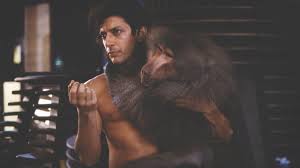 Seth Brundle is a brilliant scientist. His love interest is Veronica "Ronnie" Quaife, played by Geena Davis who is a science journalist. They meet at an event and afterwards he takes her back to his lab and shows her his new invention, which is a set of "telepods". Seth convinces Ronnie to keep the machine a secret in exchange special rights to the story, and she begins to record his process. The telepods can transport inanimate objects, but from their unfortunate experience they learn that the experimentation is unsuccessful with living beings. Like when they send a baboon through the machine and its turned inside out. Seth and Ronnie begin a liking each other and develop a romantic relationship. Their first sexual moment inspires Seth to fix the bugs in the machine, he is then able to send an animal through the machine. Ronnie is not there when he wanted to celebrate and she is meeting her former lover, so Seth gets jealous, but she really is just meeting him to clarify a threat. Seth is drunk and driven by jealousy, so he teleports himself alone, unaware that a housefly has slipped into the machine, and after the procedure he seems fine. Seth soon starts to get a lot stronger and efficient, sexually too. He thinks this is because the machine purifies his body. Ronnie is concerned, but Seth is dismissive of her concerns and asks her to undergo the transportation too. He goes to a bar and arm wrestles a man, leaving the man ina. wounded injury. He meets a woman at the bar and brings her back to his lab for sex. Seth's fingernails start falling off and now he realizes that something went wrong. He learns that he has mutated with a fly at a genetic level. Seth begins to deteriorate and look less and less human. He is not branded as “Brundlefly". He is able to climb the walls and ceilings now. He starts to lose his human reason and compassion and is slowly becoming primitive. Ronnie learns that she is pregnant by Seth, and has a nightmare of giving birth to a huge maggot. Seth hears that Ronnie plans to have an abortion so he abducts her from a clinic before the abortion can take place. He begs her to give birth to the baby since it may be his last hope at humanity. Ronnies former lover, Stathis, comes to the lab with a gun, but Seth dissolves his arms. Seth tells Ronnie about his weird plan of how he wants to merge him, his baby, and Ronnie all together so they can be the "the ultimate family". Stathis tries to help Ronnie by destroying the process. Ronnie then shoots and kills Brundlefly. Adaptation: The film was a weaker adaptation of the 1957 short-story by George Langelaan, it also adapts some parts from the previous cinematic adaptation, the 1958 film. One of the major differences in Cronenberg's film was that in this film, Veronica and Seth are not a married couple, rather fall in their romantic relationship in the movie. They are new lovers and their love story ends when Seth dies. "He felt his vision would be better served by a story about newfound seduction and romance, with all the interlocking changes and terrors that would bring to a sexually immature man’s life." -Travis Woods, on Cinephilia and Beyond. The film differed from the 1986 version in that, there was only one mutated entity in the 1986 film, in the 1958 film, the scientist is split into two, a tiny fly with a human head and a human with a fly head. Cronenberg uses heavy prosthetics to get Goldblum into a full fly-like mutation. The Fly (1986) is an adaptation of the former film with even the same title but instead directed by David Cronenberg. Much like the 1958 version, the storyline is similar but Cronenberg rewrites some of the details to make it more passionate, engrossing, and horrific. There is even a new character in the love story in 1986, to add to the reason why Goldblum's character acts impulsively in that he volunteers himself as the first human experiment, to prove to his love interest that he would be successful. The added character of Stathis Boran, played by John Gertz, added a bit of a jealousy angle and some tension between the male characters. Gertzs' character is defined as sexually insecure and insecure of his masculinity. "A sexually jealous and insecure stranger with a toxic mélange of simmering male anxieties—who is now thrashing about in the mindless throes of ego-death. Veronica’s choice to leave Stathis, to find happiness and love with a younger, more brilliant man, has robbed him of his ability to define himself with anything other than his own masculine insecurities and presumed sexual failings, and he emotionally disintegrates before her eyes." -Travis Woods, on Cinephilia and Beyond. The Fly (1986) remains to be Cronenberg's cinematic masterpiece, the additions, edits, and filming made it a classic chilling piece of art. Every remake is a work of art in its own.
Clockers (1995) 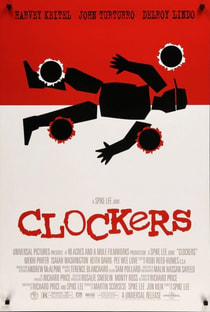 Overview: The film Clockers, is based on a novel from 1992, with the same title, by Richard Price. Universal Studios paid a lot for the adaptation to be made into a film. The film was originally supposed to be directed by Martin Scorsese, director of many hit films. Scorsese eventually left the film and pursued another project. Spike Lee was handed the film's direction and project. "Lee shifted the balance of the story a slight amount, favoring one of the two dueling main characters over the other, but otherwise the finished work is remarkably faithful to the original book", says Dan Seeger on Spectrum Culture. Lee works diligently to convey his message through the film by providing fictional experiences and consequences of real actions and choices. The film debuts Mekhi Phifer as Ronald 'Strike' Dunham, Delroy Lindo as Rodney Little, Steve White as Darryl Adams, Isaiah Washington as Victor, Harvey Keitel as Rocco Klein, and John Turturro as Larry Mazilli. Cinematography: The film and filming in this crime-movie very exquisite. Everything from the opening credits to the dramatic ending, the camera angles worked in favor of the director's and videographers dream. The opening scene pictures a series of brutal crime scene photos that were recreated from real autopsy incidents to show the viewer that they are about to watch some real and serious story. "In preparing the sequence, Lee spent two weeks at the New York crime scene unit headquarters, where the lieutenant in charge allowed him to inspect what the officers refer to, with typical gallows humor, as the "family album." The pictures he selected were later re-staged with actors and photographed by his brother, David Lee", says Stephen Pizzello, from ASC Mag. In the background is a resonating "soul song" about people in search of a life to foreshadow the upcoming themes for the viewer. Lee emphasizes how he wanted to instill a specific effect on the viewers. We weren't going to treat life cheaply in Clockers, because when you take a life, it's forever. There are too many kids being killed on the streets of this country, and it's no joke to me." -Lee, on ASC Mag Plot Summary: The story follows the life of 'Strike', or Ronald Dunham, as he lives through the housing projects in Brooklyn. He is considered to be one of the "clockers", those individuals that partake in street-level drug dealing. He works for Rodney Little, the local drug lord, who sort of owns the streets, and has a lot of the young men fear him. Rodney wants Strike to commit his first homicide, the victim is Darryl Adams, another competitive drug dealer that Rodney claims has been stealing from him. Rodney has reasons behind why he chooses Strike to commit the murder, as he reveals in a flashback with him and Errol later on. Strike meets with his older brother, Victor, and convinces him to take the murder off his hands. Adams is then found shot dead in front of a fast food joint where he worked as a manager. The film does not explicitly show this scenes, which lets the viewers wonder who actually murdered Adams. Strike is not the one that comes up to confess to the crime. His brother, Victor, confesses the crime at church and the detectives get a call from the church reporting the crime. This does not settle well with the Detectives as they have done research on Victors background and see that he has no criminal record and is a civilized contributing family man in society. "Victor is a hard-working, upstanding family man with ambitions to get his brood out of the corrupting inner city, and soon his confession doesn’t sit right with Detective Rocco Klein" -Dan Seeger, Spectrum Culture It takes not much time for the detectives to piece together that Victor is in fact actually just covering for his younger brother, Strike. Victor portrays a scenario in which he needed to act out of self-defense, and a clean record would essentially let him off with less, compared to his brother Strike. Rodney, the drug lord, gets really angry and upset at Strike for making his older brother committing the murder. This Rodney to fill Strike in with a flashback story about when Errol and Rodney were younger. Errol makes Rodney commit his first murder. Rocco starts pressuring the brothers, but Victor remains on his story and does not deviate in the details. Rocco then goes to Rodney and tells him that Strike has confessed and admitted to being a part of Rodney's drug dealing scheme. Rodney is arrested and Rocco brings Strike in front of his crew to confess. Strike does not admit to the allegations, he tries to play it off and deny that he had anything to do with Rodney's arrest. The crew does not believe him and labels him a snitch, and at the same time, Rodney calls Errol from jail to put Strike up for wanted. Strike gets together some money and tries to flee, but just then Errol is sitting in his car waiting to kill Strike. A young admirer of Strike, Tyrone, sees this and rides up to Errol and shoots him dead with Strike's gun. Errol dies and Tyrone is taken into custody. Tyrone tells his parents how he got the gun from Strike, and then his father goes out of the interrogation room and looks for Strike and beats him up in front of everyone. Rocco gets an arrest warrant for Strike, and tries to pressure him into confessing the murder of Adams, but he keeps changing up his story. Strike's mother comes in with Mazilli and Victor's wife and tells Rocco that Victor confessed to the murder and is unable to leave his bed. She is very angry at Strike and throws the money he gave her for Victor's bail at his face. In the meanwhile, Rodney is trashing and urinating in Strike's car, leaving it to be useless. Rocco drives Strike to the station and threatens him saying that is he ever sees him again, he will have him arrested and let Andre beat him down, and arrest Rodney too and put the two of them in the same cell to share a bed in prison. The film ends with a dramatic shot of Strike looking out of a moving train, implying that he is getting very far away from his previous life and home. Filming Clockers: The actors were not the only newcomers in this film. Lee ventures out and gives a lifetime opportunity to one of his members of the electric crew, Malik Sayeed. Sayeed was 26 years old at the time in which he was assigned the director of photography for this film. Sayeed was a Howard University graduate in 1990, he earned his degree in film studies. Spike Lee gives Sayeed a chance as he thinks he may not earn another opportunity for a while since he was a struggle. “I knew Malik might not get another chance for a long time, and I didn’t want him to be in video hell forever, so I rolled the dice and gave him a shot.” — Spike Lee, ASC Mag 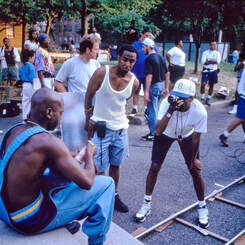 Sayeed started to compile an impressive reel of his work. Lee had talked to a lot cinematographers before he decided to give Sayeed his break. Malik knew his stuff, he was on top of technology, he was well versed in the use of new lights and latest equipments. Sayeed used a very unique filming style for the tones of the film, some technology that even Lee hadn't heard of too. The use of the Kodak's 5239 film resulted in very unique and pleasant lighting scenarios. It helped create a 'glowing aura around the characters'. The camera angles along with the lighting were used to make an amazing impact on the scenes and storyline. For example, the usage of mounts and sleds, the director and cinematographer were able to make a surreal and profound experience of a flashback in the film. The idea for filming the flashback this was was inspired by The Boston Strangler, shot by Richard H. Kline. Film art allows for a story to resonate with the viewers with audio and visual sensory aid. It adds to an amazing effect with trying to convey the story, feelings, and emotions of each character. Soundtracks help to put the audience in a specific mood, and abrupt angles help to jolt the audience's attention. Film as a whole comprises of a lot elements put together to create a lifelike melodious experience. Clean and thought out shots can create an impactful impressure. Angles make or break a moment, making film art beautiful in nature. Adaptation: In Price's novel, the attention is split more evenly between Detective Rocco and Strike. Lee, however, focuses more on Strike and his journey through the stressful incident. Lee wanted to move onto a different perspective for the film, one with less police perspective. The crime genre is filled with police centered films. Lee’s other key addition was a shift was in focus. The book gave roughly equal time to Rocco and “Strike,” the “clocker” who might’ve committed a murder his brother has confessed to. Price’s adaptation focused more on Klein – understandable, as it was being written for De Niro – but Lee’s pass moved the lens to Strike, because the Klein-ccentric take “would have been just another cop story to me.” -According to Jason Baily on Flavorwire. The films was a fairly faithful to Price's novel. However, in Price's novel, there are far more details regarding the drug trades and the society that is created as consequences from actions from individuals like this. Overall, the film portrays issues that are still prevalent today, even though the movie was made in 1995, the events and attitudes in this film still exist. Chi-Raq (2015) Overview:  Chi-Raq is a 2015 musical-crime film based on a Greek Comedy called Lysistrata, written by Aristophanes. The film was directed and produced by Spike Lee, just like Clockers. It was written by Lee and Kevin Willmott. The film centers primarily around a group of women with a common goal: to stop the deadly gang wars in the infamous South Side of Chicago, or Chi-Raq, with the clever tactic of abstinence. The original play was written in 411 BC. To give some background, this was the time where there was a war between Sparta and Athens. Lysistrata comes up with a master plan to try and end the war and violence by abstaining from offering her body to her husband. Lee released the film in 2015, and the film takes place in multiple neighborhoods of Chicago, the film is like Lee's style of touching onto urban violence. This film, like Lee's film Clockers, deals with gun violence and urban areas bordering impoverished states. The main focus was the protest of the women and the gang violence. The film stars Nick Cannon, Wesley Snipes, Teyonah Parris, Jennifer Hudson, Angela Bassett, Samuel Jackson, and John Cusack. Cinematography: The cinematography, or art of making motion film, is especially exemplified in Chi-Raq. The opening scene is welcomed by a song playing in the background about crime. The lyrics read "Police sirens, everyday, people dying, everyday, mamas crying, everyday, fathers trying, everyday". The song was performed by Nick Cannon. The song is instills emotion in the view, with lyrics being projected against a black contrasting background for dramatic effect. In the opening scene, there are also statics regarding American deaths in war lands, showing how in just Chicago there were more than the countries with war. This cinemagraphic input really puts into perspective the crime rates and allows the viewer to get comfortable in their seat because the movie is about to show that side of violence. "Together, the song and the sermon, heard when no image is seen, are a gauntlet that Lee throws down to himself: What can popular art be in a time of crisis? How can a work of mass entertainment live up to the moral challenge that the priest poses? How can art depict and respond to the crisis, reflect the monstrous societal forces that render many black lives unlivable or simply unlived, and yet be—as art—free, personal, intimate, and beautiful?" - Richard Brody, on The New Yorker 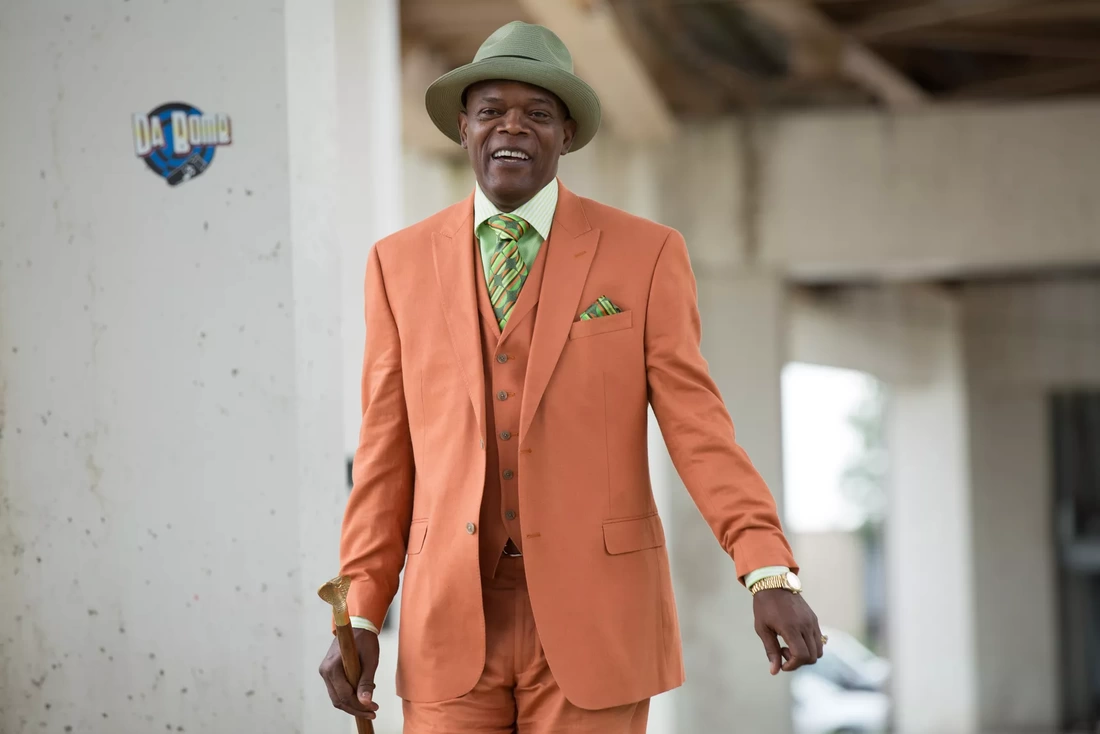 The filming style of this film was very unique. It was filmed in a "presentational style, like a stage play". Lee is considered to be one of cinema's most theatrical directors. The characters often spoke directly to the audience and into the camera. Characters' dialogues often consist of couplets. Lee uses rap and music as complimentary audiovisual cues to engage the audience with the filming. Color schemes area also observable in the film, the rival gangs seem to have distinct colors, purple for the Spartans, and orange for the Trojans. What is very interesting is that, as the movie progresses, the distinction in color-coded outfits eventually wears off and the women are wearing clothing of the same color, sort of like a uniform, signifying the united power they started. Plot Summary: Chi-Raq revolves around the women of the Chicago South Side, who essentially go on a sex strike until their men stop impulsively and recklessly kill each other. Teyonah Parris plays the modern day Lysistrata. The events are narrated by Dolemedes. A war ensues between two rival gangs: The Spartans, led by Demetrius Dupree, or "Chi-Raq" and The Trojans, led by gang lord Cyclops. Demetrius' girlfriend, Lysistrata, starts to see the reality of the crimes around her, especially a shoot-out at one of Demetrius' concerts. A young girl named Patti is killed by an unidentified man, Patti is the daughter of Irene. Lysistrata moves in after a fire with Miss Helen, a non-violence advocate. She inspired Lysistrata to start the sex-strike. Lysistrata then organizes a meeting between herself, and the girlfriends of the members in both gangs. The agree to withhold sex from their men until the men agree to put their guns down. Their motto line is now "No Peace, No Pussy". The strike seems to be inspirational and spreads around the city pretty quickly. But even with the large efforts, the Spartans and Trojans still refuse to stop their war and violence. All the women who come together to enforce the protest have the same pain and are able to motivate each other and come together. This movement grows larger and eventually spreads nationwide. The men eventually end up accepting the women's strike and form a peace treaty of a sort. Adaptation: Lee keeps a lot of the details the same as the Greek play, all of the main components of the film are the same. The war between the two groups, the essence of the protest, the women empowerment move, and the undying love for their men. Spike Lee adds a huge sense of feminism in this film. The main character, Lysistrata is very bold and confident once she decides she can no longer hold her silence. Another striking similarity between the film and Greek comedic plays was the feature where Samuel Jackson's character pauses the scene and proceeds to talk directly to the audience, sometimes in olden English. The play, however, is more lighter in tone and more comedic, the film tackles a very serious and sensitive issue: high crime rates in black dominant neighborhoods, and female empowerment. Lee was asked during an interview about the adaptation source and if the film is a musical that is based on the Greek play Lysistrata. He responds with the quote below. "Well, this play was written by the Greek playwright Aristophanes, 411 B.C. The lead character was tired of the war between the Trojans [actually, the Athenians] and the Spartans. So she came up with this amazing idea: We could make our men put down their spears, their knives, whatever, if we get all the women together and withhold sex, have a sex strike". -Lee says according to Bryan Smith, Chicago Mag. He says in an another video that is was indeed adopted from the play, but they took only the premise of the play and "moved it to the South Side of Chicago", he also calls Chicago the "murder capital" of America.
The film was an amazing portrayal of how film adaptations can make or break a story. The film did do great justice to the story by adding the original satire and themes of Greek comedy. Overall, the film and cinematography of both films by Lee were amazing examples of film art. Preview of both movies Pain & Gain (2013)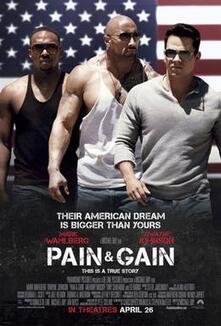 Production overview: Pain & Gain, directed by Michael Bay, is an American action and comedy film that starred some popular actors such as Mark Wahlberg, Dwayne Johnson, and Anthony Mackie. The film claims to be based on a true story published by Pete Collins in the Miami New Times articles and then compiled into a book called Pain and Gain: This Is a True Story. The film details a lot of violence, like kidnapping, extortion, torturing, and murder. The film reviewed a variety of mixed reviews, it was received much differently than what the producers intended. The film was criticized for the violence, direction, and adaptions inaccuracies. The film grossed roughly $86 million worldwide. 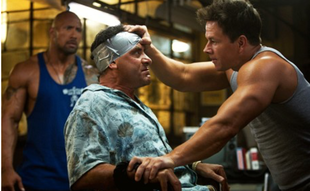 Plot Summary: In 1995, Daniel Lugo, played by Mark Wahlberg, is a convict who just gets released from jail. He had previously committed crimes regarding medicare fraud. He then finds a job at the Sun Gym, where he increases memberships by three times the members than before. He befriends a trainer at the gym named Adrian Doorbal, played by Anthony Mackie. Doorbal is a body builder but he is basically impotent because of his previous excessive use of steroids. Lugo is inspired by a motivational speaker to become a do-er, he starts to concoct a plan. He hears about the lifestyle and achievements of a new member he is training, Victor Kershaw, played by Tony Shalhoub. Lugo sees Kershaw as a crook, so he feels less bad about scheming against him. Lugo includes Doorbal in his mischievous plan, along with another accomplice, Paul Doyle, played by Dwayne Johnson. Doyle is also another recently released convict who finds religion and turns to Christianity. He is reluctant to join the plan but decides to as he leaves the halfway house that he was staying at. The priest running the halfway house makes a sexual move on Doyle. The newly formed "Sun Gym gang", makes their first attempt at kidnapping Kershaw, straight from his house. They are unsuccessful and then after another failed attempt, they resort to tasing him and taking him to a warehouse that Kershaw owns. Lugo and the accomplices try to disguise and mask themselves but Kershaw recognizes Lugo's cologne. The plan proceeds as the Sun Gym gang intended, they get Kershaw to have his family evict their home and fly out of state, and then they brutally get Kershaw to sign the documents to transfer his assets to them. The gang gets a hold of the assets, but then realizes that releasing Kershaw would not be a good idea. Lugo then comes up with a plan to murder Kershaw by forcing him to drink alcohol and then crash in his car. Kershaw survives the crash and then they try attempt to kill him by lighting his car on fire while he is unconscious. As their final attempt, since he didn't die from the blaze, they simply run him over with their car twice. Surprisingly, he survives that too. They find out that he has been hospitalized. The gang members take over Kershaw's riches. Lugo takes over Kershaw's car, as well as his Miami home. Doyle ends up abandoning his religion and marries a stripper while blowing his cut of the money on more cocaine. Doorbal gets married to the nurse that was treating him for his erectile dysfunction, he also uses his money to get a treatment. Kershaw survives and then decides to report all of this to the police. The police don't believe him because of his approach and alcohol levels, they think the story is unauthentic. Kershaw resorts to hiring a private investigator. From the PI's advice Kershaw leaves that hospital to try and save his life from the gang. The private investigator, Ed Du Bois, starts to follow the gangs activity to get some intel. Kershaw starts making calls about his stolen money and identifies where the crime originated. The gang goes to find Kershaw to kill him, but they get there too late, Kershaw has checked out. They find out that Du Bois was renting out the room for Kershaw, so the gang plans to kidnap him instead. When they arrive at Du Bois' house, the police is there so the gang escapes. Doorbal and Doyle have spent their share of the money and realize that they need to perform another heist. They target the next victim, Frank Griga, played by Michael Rispoli, who is the owner of a phone sex operation. The gang disguises as an investment group and lure Griga and his wife into Doorbal's home. Lugo, out of anger, accidentally attacks Griga and ends up killing him. Griga's wife, tries to shoot Lugo but Doorbal injects her with a heavily sedated horse tranquilizer, which unintentionally kills her. They violently dispose of the couples' dead bodies and flee. Doyle becomes disturbed by his actions and returns to the priest's and leaves the gang. The police finds out about the deaths of Griga and his wife, and pair it with the evidence found by Du Bois and set out a plan to arrest the gang. The police arrest Doyle at the church and Doorbal at his home. Lugo tries to run and he gets on his way to the Bahamas, but he gets shot by Du Bois. The police catch up and arrest Lugo. Doyle confesses, and so does Doorbal's now ex-wife. Themes: Some of the central themes in this film were greed and violence. The greed seemed to be fueled by Daniel Lugo. He was the head of most of the malicious plans that the gang carried out. Then, the other members of the gang, Doyle and Doorbal, ran out of cash because they spent it on their pleasure and showed greed again when they came to Lugo to plan another heist. Their collective greed leads to a lot more destruction and doom than they probably intended. They face their inevitable punishments towards the end. Although the film was not accurate to the actual adaptation, it did a good job showing consequences of wrong actions. The movie also portrayed a lot of gore and violence. Violence seemed to be a recurring theme. There was murder, guns, robbery, mutilating body parts, and other crimes. The gang members fell for their desires which led them to commit such horrendous violence. All the characters of the gang in the film seemed to be desperate for happiness and success, which portrayed them as narrow minded. Adaptation: According to the article on The New Yorker, “Pain & Gain,”... is a brash, vulgar, exhilaratingly vigorous, spontaneously complex hoot of a true-crime movie. It’s based on reporting by Pete Collins about events that took place from December, 1994, through June, 1995." Although the film was based on real events, much of the detail was altered for some reason. The film adaptation was hardly inspiration, Richard Brody writes in his article, "There’s no symbolic significance to the movie, no great philosophical import. If Bay is saying anything, it can be summed up as, “Don’t kidnap people, schmuck.” " (The New Yorker). The film also adapts to the true story very unfaithfully. The details and portrayals of the characters are inaccurate to the historical facts. The first random inaccuracy is the character of Doyle. It was not one character, rather a mix of three separate personalities that comprised the character. The character was comprised mainly on Carl Weekes' personality, but there were hints of George Delgado and Mario Sanchez, according to David Huglund's article on The Slate, "He never went to work at a church and no elderly gay priest came onto him." Another inaccuracy in the film is the wronged portrayal of Kershaw, who was a portrayal of a man named Marc Schiller. "Pain and Gain, which stars Mark Wahlberg and is directed by Michael Bay,...goes out of its way to stigmatise Schiller as well in order, one assumes, to generate some sympathy for its leading man. " (The Telegraph). Schiller even says that there is no resemblance to him at all in the character of Kershaw, in-fact he says he was actually a humble family man. The movie could have been portrayed better. The camera angles did give it that edgy and rushed feeling, but the character depiction, background music and inaccurate details of the film deter it from the actual true story, making it just a cinema story rather than a historical crime. Bug (2006)Production overview: William Friedkin's Bug is a 2006 psychological thriller film starring Ashley Judd, Michael Shannon, and Lynn Collins. The film is an adaptation of a play by, Pulitzer Prize winner, Tracy Letts. The film did not generate the buzz that was intended by the screenplay writers. In an article written by Alex McLevy, the film was described as "It steadily increases the tension from the first frame forward, eventually reaching such a feverish pitch, with such ferocious disregard for patience or audience outreach, that it becomes the rare film that ignores bringing the audience along for the climatic ride in favor of leaving them gobsmacked in the dust." Bug was not a big hit when it hit the movie theaters in 2017. Most of this may have been due to the competition, or the poor film advertisement. "While “Bug” looks like a horror movie, it is at its heart a psychological thriller and a character study. Still, studio executives in their infinite wisdom were convinced they knew what they were doing." (article on The Ultimate Rabbit) The poor opening of the film lead to a mass disappointment from the audience, as the critics believe that the wrong audience was attracted to the movie. Plot summary: The film opens very randomly with a dead body in a weird looking room. The we are introduced to Agnes White, played by Ashley Rudd, who is a waitress at a bar located in Oklahoma. She lives in a run down motel. Her son disappears a few years previously and she was unable to get over that. She starts consuming alcohol and does drugs with her best friend R.C, who is a lesbian. Agnes starts getting random silent phone calls, which she thinks are from her abusive ex-husband, Jerry, since he just got released from prison. Agnes is introduced to Peter Evans, through her friend R.C. Peter introduces himself as a discharged soldier. Agnes and Peter kindle a spark and get closer to each other out of loneliness. Jerry comes to visit Agnes, and after that Agnes begins a relationship with Peter. Peter starts telling Agnes very weird things about his experience while being in the military. He tries to convince her that he was the subject of biological testing by the U.S government. Agnes and Peter get very close, Peter then reveals to her that the silent phone calls that she was getting were also from the government, trying to track down Peter. After she dismisses the disturbing details, Peter and Agnes get involved in physical relations and intercourse. After the intercourse, he tells Agnes that there are bugs that were planted by the government in their room. Peter starts this erratic-like behavior as he tries to fight the bugs, invisible to the viewers. He claims that the bugs are taking over his body. Agnes soon joins in on this behavior. It appears that she too has become infected with whatever Peter has. Agnes' friend R.C tries to convince Agnes to leave Peter because of his abnormal behavior, but the behavior seems understandable to Agnes. R.C says that a man named Dr. Sweet is looking for Peter. Peter starts having an episode and Agnes just gets frustrated and makes R.C leave them alone. The two then isolate themselves from the world, convinced that they are victims of invisible bugs within in. Peter soon starts to think about where the bugs are coming from and then he comes to believe that there is a colony of bugs, living in one of his teeth. In a very disturbing scene, we see Peter actually yanking his tooth out. He looks at the tooth and shows Agnes that he sees a colony, and Agnes sees it too, apparently. They start covering their room with aluminum foil and bug zappers out of paranoia. Dr. Sweet shortly arrives to the house, he tells Agnes that Peter is not an discharged military soldier, rather his patient. He reveals to Agnes that Peter ran away from a mental asylum where he was receiving treatment for his condition, a mental condition in which he believed the bugs were real, which in-fact were his mere delusions. The delusions were a symptom of Peters mental illness. Peter proceeds to kill Dr. Sweet. He convinces Agnes that Sweet was literally a robot sent from the government as part of the crude conspiracy that was being constructed against him. Peter gets Agnes to elaborate more on his delusions by adding weird details about the conspiracy in which he even goes to say that her son was kidnapped by the U.S government to lead the two to meet and that each of them is infected with bugs. He tells Agnes that the government intended for the two to meet and procreate so that they can infect others and spread the bugs. They see themselves as pawns of the larger conspiracy. They don't want to spread the bugs and in order to prevent this, they both spill gasoline on themselves and light themselves on fire. In the end credits scene, there was a disturbing scene in which they compared it to the opening scene with the weird room with the dead body. The dead body at the end is revealed to be Dr. Sweet, and the toys in Agnes and Peter's room are completely intact and no sign of the aluminum foil is shown. It is unclear which shot, the opening or the ending, shows the true reality. Themes: The more common and larger theme in the film was the theme of mental illness and psychological impairment. The film clearly wanted to prove that the bugs were not actual really in the two characters, rather figments of their imagination, or delusion. The arrival of Dr. Sweet confirms this theory, in which the audience is convinced that Peter really is a mental asylum runaway. In some demented scenes, we see Peter smiling maniacally. It is unclear how he convinces Agnes that she too is infected. There is a syndrome in which another person can have shared symptoms of psychosis if the two people live together and isolated from others. This seems to be the psychological explanation for Agnes' adapted psychosis. Another psychological impairment that we see is Agnes' depression. It seems that she suffers from depression as she lost her son, and then started to drink alcohol and do drugs. This film's aim was to present as a psychological thriller and it did present some arrays of psychological conditions. Adaptation:
This adaptation was more faithful to the original inspiration. It was adapted from Tracy Letts play written in the 90s. It seems that although it was unappreciated by most, those who did look into the film were able to appreciate the case study. The author of the article on HuffPost says "Bug is a rare picture that balances realistic, literal psychological horror with metaphorical meaning with small punches of satirical wit. " The film follows the themes of the play by Tracy Letts, it shows the craziness one can experience when they spend time with another person who is afflicted by mental illness. The dark and mysterious themes from Letts' play were portrayed accurately in the film adaptation too. "If love is mad, if love is crazy, then Agnes and Peter are, as Laura Dern stated, “wild at heart and weird on top." (Huffpost). The Set Up (1949)Overview: Director Robert Wise presents impeccable cinematography with The Set-Up. The film was released in 1949 in the post-war time. Film noir was an art of its own, but with skillfully added direction and acting, the inspired adaptation comes to life. "The film is based on a poem by Joseph Moncure March". The poem originally features a black man in the role of Stoker “but we didn’t have any African American actor/stars at that time”, says Wise, according to Martin Scorsese's commentary. Wise delivers a bold tale that allows the viewers to resonate with the struggles, efforts, and hopes of the protagonist, Bill Stoker. The role of Bill Stoker was played by Robert Ryan. The ability for the audience to sympathize with the character of Bill Stoker was undoubtedly credited to Ryan's acting. "It's all in the eyes," Robert Ryan once said of film acting. "That's where you do most of your work." (Lonelyheart, mubi.com) Robert Ryan was compared to Burt Lancaster, hero from The Killers, 1946. "Take a close look at Ryan in The Set-Up ... and you'll get a sense of the relative frailty and delicacy of most male movie stars. In the post-war era, only Burt Lancaster was as physically imposing...Ryan never looked as coordinated as Lancaster", according to Kent Jones, author of the article Lonelyheart. Summary: "1949’s The Set-Up is a lean, hard-hitting tale of a boxer past his prime, but while that concise premise feels familiar the film takes an interesting and ultimately more powerful direction by the time the end credits roll." (according to Scorsese's commentary on filmschoolrejects.com) Bill Stoker and his lovely and faithful wife Julie, played by Audrey Totter, stay in a hotel near the boxing arena of their city for the night that Stoker has a fight. Julie is exceptionally concerned for her husband's wellbeing, and rightfully so, as he strives to take on a young, 23-year-old boxing champion by the name of Tiger Nelson. Bill, at the age of 35 years, lacks the basic agility, strength, and speed that is required of a boxer. Regardless of what anyone thinks, Stoker feels pretty good about himself. He believes that he can take out his opponent with just one good punch to the head. His wife, however, tries to remind him of his age and says that he is considered an "old man" when it comes to this sport, and that he should retire while he can. He keeps her feelings inconsideration and seems respectful of her concerns. He goes to the boxing arena and prepares for his exciting and nervous fight with Nelson. Stoker learns that his manager, Tiny, played by George Tobias, makes a unfair deal with the opponents manager in anticipations that Stoker would not win the match anyway. When Tiny notices that in the third round, Stoker is still up and not losing, he asks Stoker to throw away the fight and let the opponent win so that the opposition party would uphold their end of the deal, earning everyone a fair deal of money. But, for Stoker, it was not entirely about the money, it seemed as if he wanted to win this one last fight before retiring, as shown from his excellent perseverance. To add, it seems that when he learns of his managers trade with the opponent, Stoker finds himself to muster up some more energy, determination, and motivation to really give a good show to the audience. He gets up and makes the fourth and final round a complete turn, landing him his win. He proves the audience wrong, which he needed to boost his self-esteem and image anyway. In the beginning of the fight, there are some condescending remarks to Stoker regarding his age and ability. The unfortunate part was his managers lack or belief in his, therefore the gambling. It seems that the opponents gambling party were some sorts of gangsters. One in particular was named Little Boy, played by Alan Baxter. Little Boy comes into the locker room after Stoker's victory and says to him "I did not get what I paid for...Get dressed and come outside." This alerts Stoker of what will possibly happen, so he runs trying to escape the gangsters, but they find him in the alley outside the stadium and "beat him to a pulp, destroying his right hand in the process with a brick." (Scorsese's commentary). With having his hand severely damaged, his role as a future boxer comes to a hapless ending. Julie returns to the hotel after walking around and exploring the city while Stoker's fight was taking place. She peaks from the window since it was late and her husband had not yet returned, only to see him struggling to walk out of the alley, he falls on the floor appearing to be badly wounded, she screams "Bill!" and runs to his side. This final scene was heart-wrenching. Bill informs Julie that he had won the fight, but won't be fighting again. Themes: Some notable themes appear in the film, such as love of caring and grit. Julie is concerned for her husband, out of love for him, she can not bear to see him in pain. Or as she says "with his brains out of his head". His respect and consideration for her concern is admirable, he assures her that he is just "one punch away". Throughout the film, we see Stoker peaking through the locker room window to see if Julie has changed her mind about coming out and supporting him. He smiles and gets happy when he sees the light close, presuming that she has changed her mind and decided to come out to watch him fight. It is obviously interpreted that he loves his wife and desires her support, but at the same time, understands her fear. The second theme that I found recurring was grit. To have grit is to have courage, strength, and determination. All exemplified by Stoker's attitude about his career, current ability, and goals. He displays a great about of courage even though his victory was against the odds. Even when he wins, he is humble. Especially after learning of his manager's fix, he does not cheap in and throw the fight, rather he gathers strength and finds himself more motivated to do what is right by himself. He did not want to lose or deter his character and his fight. Stoker goes against what his wife fears, what his manager thinks, and what the audience says, and still wins the fight. Adaptation: The film was a faithful adaptation to the poem written by Joseph Moncure March. The poem was published in 1928, and depicted a narrative which two decades later was the original inspiration for The Set-Up. The poem provided RKO studios with everything they needed for a film adaptation. "A setting, a tough-as-nails title, and a story about two conniving fight managers and their aging black middleweight Pansy Jones." (Poem Noir Becomes Prizefight Film). The adaptation was faithful in the story, climax, setting and plot. The most obvious change was the main character, who was black in the poem. The poem was similar in plot line, where the fighter is set up. In the poem, the fighter's name is Pansy Jones. His managers, along with a gambler set Pansy up, but do not say anything as they assume he will lose anyway. Pansy learns of what is going on, and out of anger and resentment, towards the end defeats his opponent. In March's poem this instance is depicted like this: "No boxing now To hell with that! He leapt in striking Like a savage cat," Unbeknown to Pansy, his victory in the ring equated to his loss as the gambler and gangsters assault him after the match. Just like in the film adaptation, both story endings result in the boxer being hurt due to the unwillingness to intentionally lose the fight. Cinematography: I most admire cinematography and the creative use of angles to add to the depth and dimension of a scene. In the film, the pivotal scene of the boxing match was shot in three different angles, Wise knew how to make the scene impactful. "Wise used three cameras to capture the boxing scenes — one capable of seeing the entire ring, one focused on the fighters, and a handheld for quick shots and close-ups." (21 Things We Learn From Martin Scorsese's Commentary on The Set-Up). The angles allow us to feel the brutality, physicality, and the effort of the fight and emotions of the fighters. Another neat use of camera was in the opening scene of the film where the director adds a catch of a clock that reads 9:05. Wise then closes the film with the same close showing the time that lapsed roughly about the duration of the film later. This is not a significant detail, rather a piece carefully included to create a connecting and coherent feel while watching the movie. The Indian Runner (1991)Overview: The Indian Runner, was directed by Sean Penn in 1991. This was actually Penn's debut as a director and writer. It starred David Morse as Joe Roberts, Viggo Mortensen as Frankie Roberts, Patricia Arquette as Dorothy, and Valerie Golina as Maria. This film carries a lot of elements from 1970's American cinema. The film was mainly inspired by a five minute song written by Bruce Springsteen in 1982, titled "Highway Patrolman". "The film oscillates, like a blues ballad, between uplifting humanism and melancholic despair in an irregular tempo that suggests a less than comfortable resolution. Much of what is great about the film is its combination of stark visuals, an amplified period atmosphere, star turn acting and raw emotion: signature components of the best American cinema of a previous generation", according to an article by Bill Craske. Setting-wise, it seems the film takes place in the later 1960s, after the Vietnam war, in a midwestern small town, in Nebraska. The film revolves around the schematic, moral, and status differences between two brothers, Joe and Frankie. We are able to see ideological differences between the two male characters through their conversation. 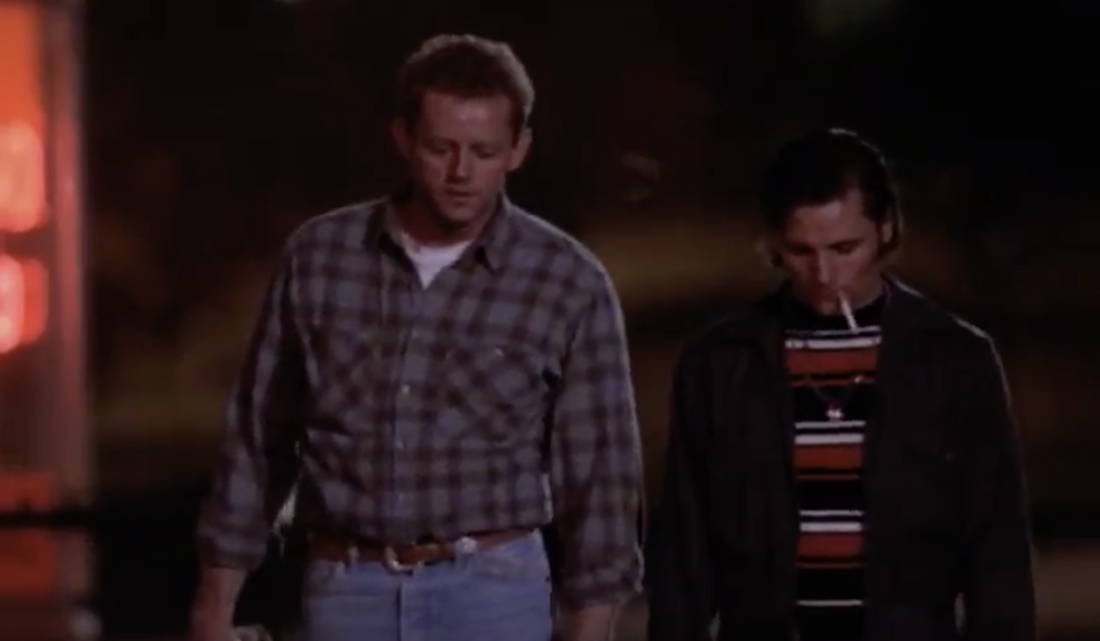 Summary: Joe Robert's is a young man that has a small family to provide for. He tried to have a farm and sustain his family with that. But, when he lost the farm, he became the small town deputy sheriff of his town. The opening scene was a very important scene in which Joe shoots and kills a man in the frame of self-defense. Joe feels conflicted about this shooting and it does not settle well with him, he confides in his wife Maria, and she assures him that he did nothing wrong. Later that night, Maria hears something in the middle in the night, takes her husbands gun to investigate and finds that her brother-in-law, Frank, has broken into their home. He could not wait until the morning, he says. Frank spends very little time with Joe and his family, and returns out of town the next day, without seeing or greeting his parents. Frank says they will understand, and they always do when he does anything. Joe does not hear from Frank for several months. In this time, their mother dies and Frank is absent from the funeral. He finds out from their father that Frank is in jail. When he is released, Joe goes to the jail and waits for him to get out, only to see that he has a girlfriend, who is pregnant, also waiting in the jail to meet Frankie. Joe quietly leaves, as he wants Frank to enjoy this moment with his girlfriend Dorothy. Joe informs Frank of their mothers death and meets Dorothy for the first time. Before coming to meet Frank, Joe asks his wife Maria if Frank can come and stay with them for a little bit, to which she very reluctantly agrees. Both of the brothers reminisce their childhood and how they used to have so much fun playing together. Frank declines the offer to come stay with his brother. Their father then commits suicide, probably due to loneliness and emptiness, and the news reaches Frank. Frank packs his stuff and comes to stay with Joe. Dorothy and Frank announce their pregnancy and Frank seems really happy about it. After this scene, we see a meaningful moment between the two brothers, where they rekindle their bond and acknowledge how they have both missed one another. Frank proposes that they play a game they used to play when they were younger, similar to tag, and they both go running into the field and then hug and mutually cherish the moments. The film takes an unusual turn at this point, even though it seemed to be getting happier for everyone, we saw good news, new starts, and bonding between the characters. Frank's behavior starts to get startling, the rude and animalistic side starts to become more and more apparent. He insults and spits food on his girl friend, which was very scary for her too. After that, he goes to a bar and gets into a violent fight with one of the other men at the bar, leaving the man's face bloodied and apparently blind-sighted. The police call Joe in, while Frank is handcuffed to the bar. Joe is conflicted with his duty as a brother and as a civil policeman. He tells Frank that his actions of that night could cause him to serve a year in jail. Frank gets a job in construction and makes seemingly active efforts to try and be a better man for Dorothy and his future child. He proposes to Dorothy and weds her, starts going to work, and cleans up his appearance as well. Again, seemed as if there was hope for him. He also grieves his parents' deaths in the car ride with his brother. He spends time with Dorothy while she gets things ready for the baby, and then the worst possible situation takes place. Just as Dorothy is ready to deliver the baby, Frank is missing. He is nowhere to be found. Joe gets another call about his brothers actions. But before this scene, there is a scene where Joe and Frank were having a conversation at the bar and Frank says there are only two kinds of men, "heroes and outlaws", he saw the world much differently than what reality presented itself to him. He tells Joe that he would've enjoyed killing that man because he would have no repercussions. Joe learns that his younger brother has committed murder and falls into despair. He chases Frank's car all the way to the state's border and watches his headlights disappear, letting him get away. Themes: A theme that was very recurring was the importance of family and the lengths people go for family. Joe never gives up on his family, especially his brother Frank, despite his illegal, irresponsible, and childish actions. Joe only gives a lot of effort for Frank because he was his younger brother and he constantly sees his as a kid who used to play with his toy guns. Joe even risked being biased with his brother, when he brought him back home after Frank injured that man at the club, he faced no consequences, even though he deserved one year in jail. Joe physically cuts his own hand to illustrate to Frank what blood is and what it means to be family, and how that bond is sacred, that it gives meaning to life. Character analysis: Joe was protective, responsible, and in good moral standing. The exact opposite of his brother Frank. There were not many parallels between the two brothers. It was unclear as to why the two brothers were so different. Frank presented with irrational ideas, probably ideas that resulted from seeing his older brother always being the role model, parent's favorite, and someone that everyone compared him to. He could also be facing post traumatic stress disorder as he served in the Vietnam War. The character analysis can go very deep for Frank, as he shows a lot of signs of misaligned view points. Adaptation: The film was a faithful adaptation of the song. Penn keeps the relevant details from the song and adds various plot continuations of his own. "Given all that, it means something that Springsteen thought highly enough of Penn’s vision even as a first-time filmmaker to grant him permission to use the “Highway Patrolman” characters and story." (The Verge) The song mentions the character names and roles but the added detail and events were the work of new writer, Sean Penn. "Ever since we were young kids, it's been the same come down I'd get a call on the short wave, Frankie's in trouble downtown Well, if it was any other man, I'd put him straight away But sometimes when it's your brother, you look the other way" These lyrics adequately describe the relationship between the two brothers. Joe would constantly get calls from authorities informing him of his brothers misconduct. Joe helps his brother get out of trouble every time he acts up, even until the very end where he lets Frank get away. This shows his obvious bias towards his family, which goes back to connect with the movies theme of the importance of blood. The 1982 song by Bruce Springsteen was extremely moving and emotional. He even had a Netflix special in which he performed the song. It captivates the essence of the story very well. The plot resonates with anyone with a brother, or siblings for that matter. The director does a really good job creating a film adaptation of the song, and the film did very well for its time. "Penn, he was taking advantage of a fertile period for American cinema, when studios and independent producers were willing to spend a little money on more artful, sophisticated dramas, figuring that fostering relationships with young directors" (article on The Verge, by Noel Murray). Sources used:https://filmschoolrejects.com/martin-scorsese-the-set-up-commentary/
https://mubi.com/notebook/posts/lonelyheart "Poem Noir Becomes Prizefight Film", by Jefferson Hunter https://www.popoptiq.com/the-set-up/ http://sensesofcinema.com/2001/cteq/indian_runner/ https://www.theverge.com/2018/12/14/18141412/bruce-springsteen-broadway-netflix-special-indian-runner-movie-recommendation-what-to-watch http://moveablefest.com/sean-penn-reflects-on-indian-runner-20-years-later/ |
AuthorHi. My name is Husna. I am a full time student at the College of DuPage. Archives
Categories |
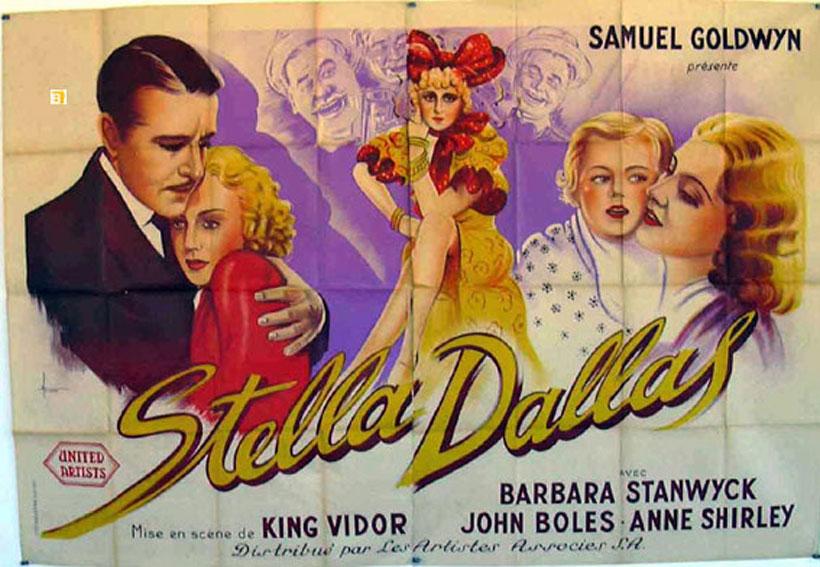
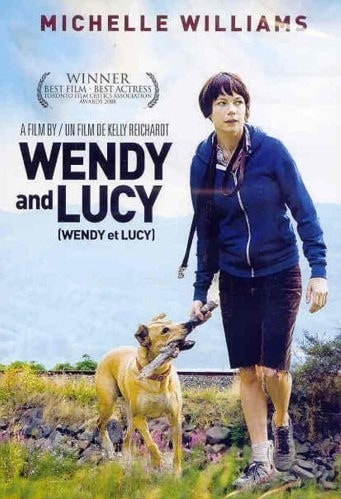
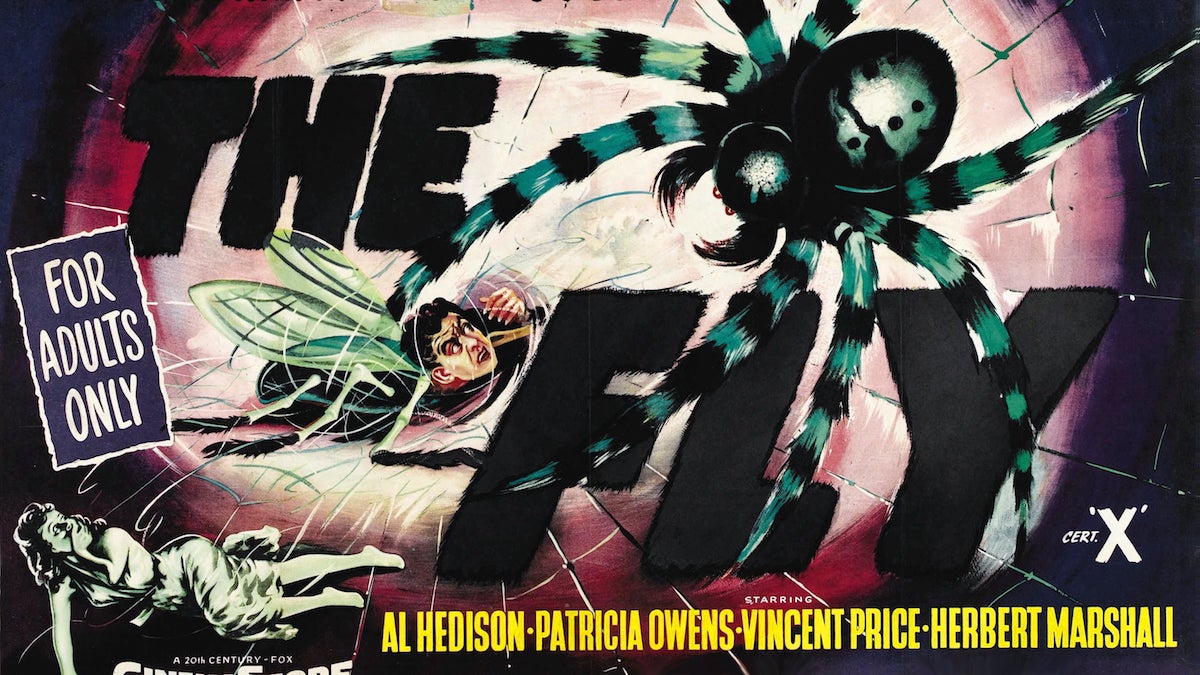
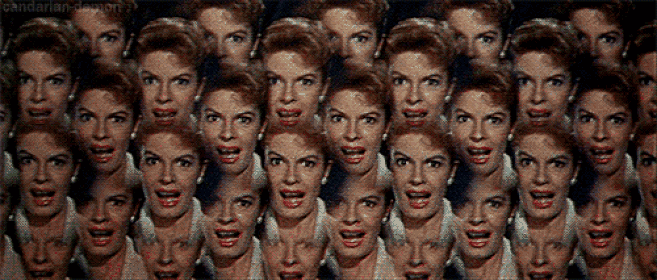
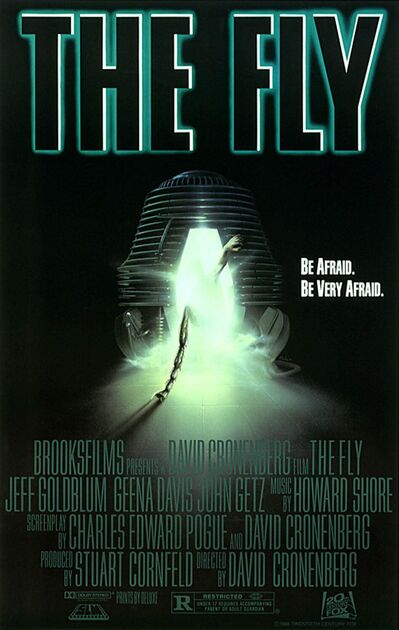
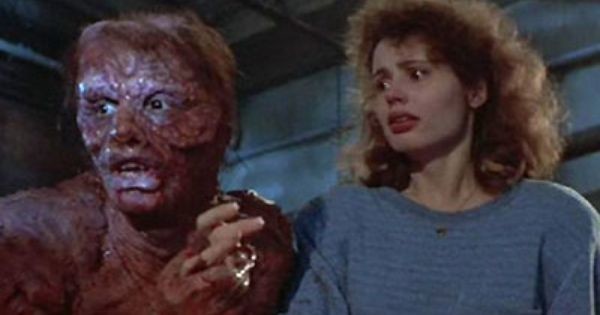
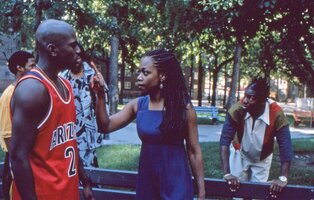
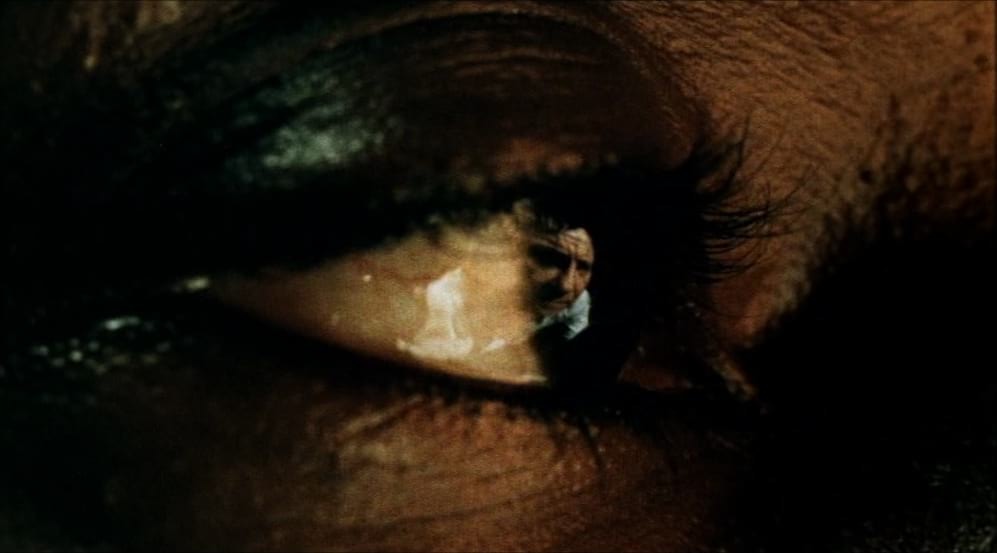
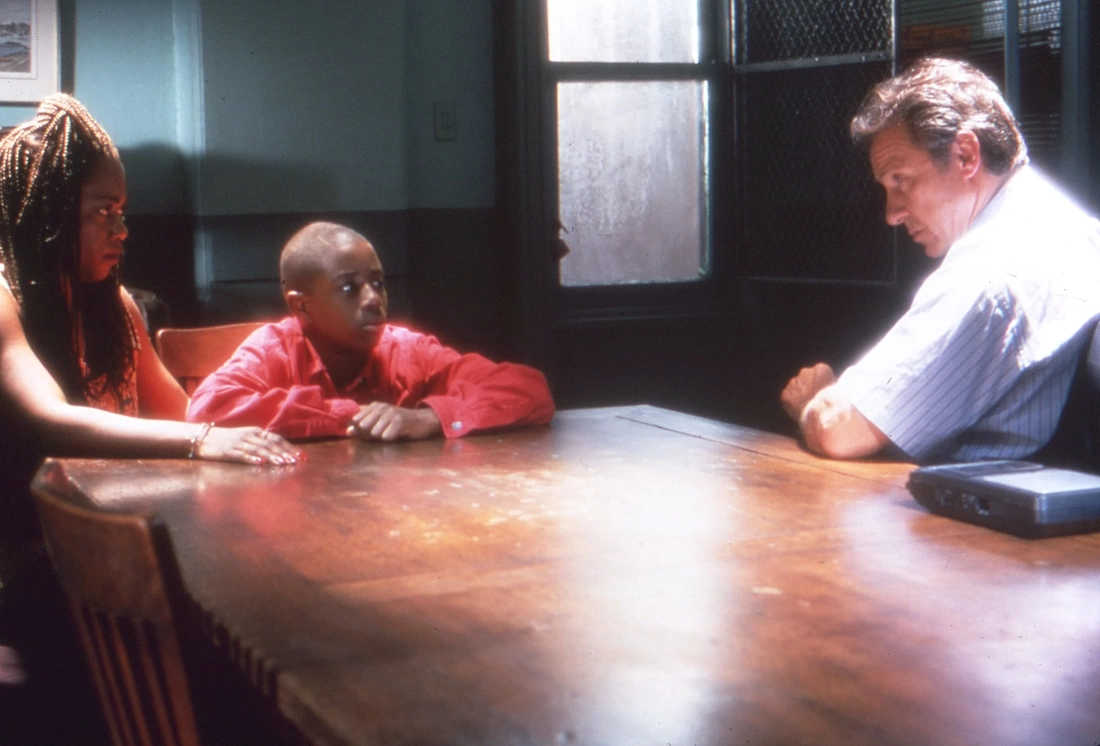
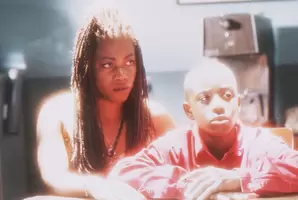
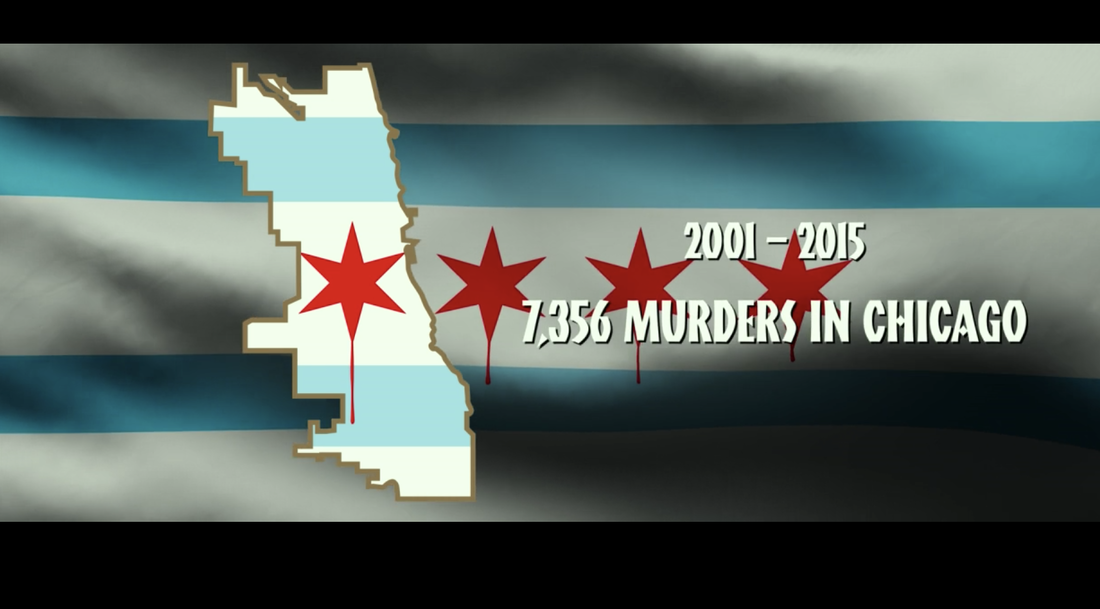
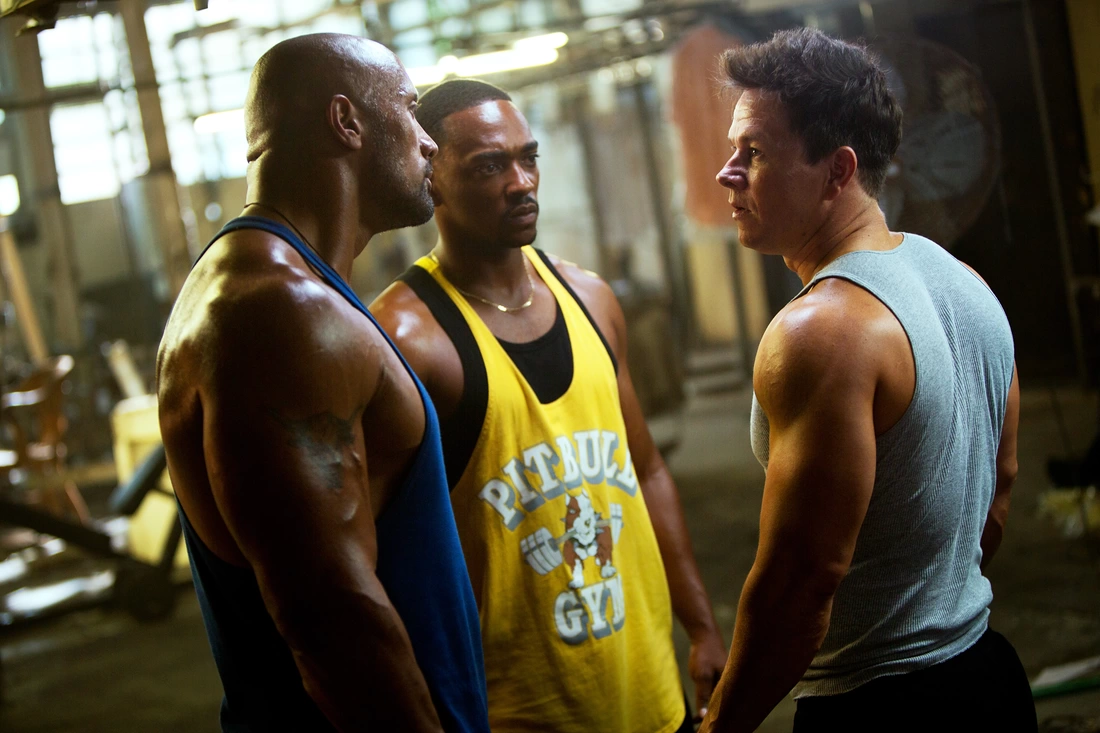
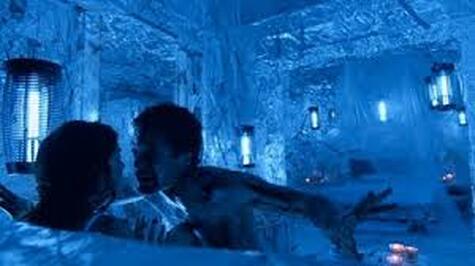
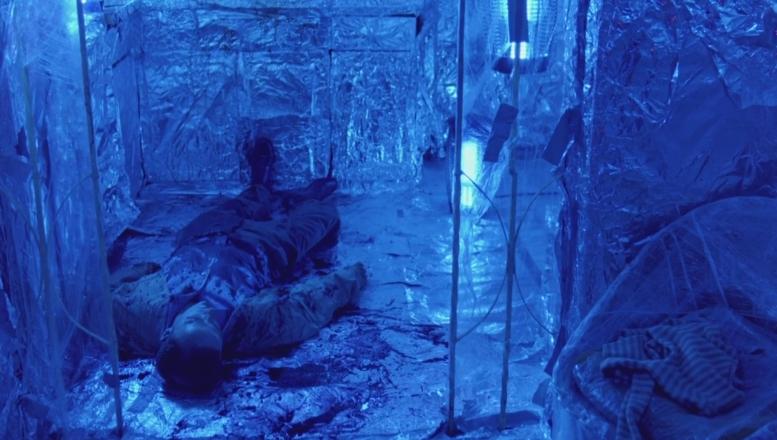
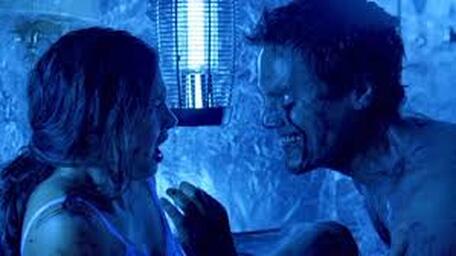

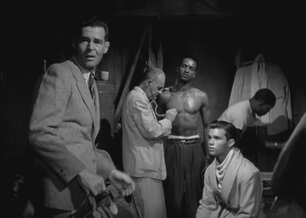
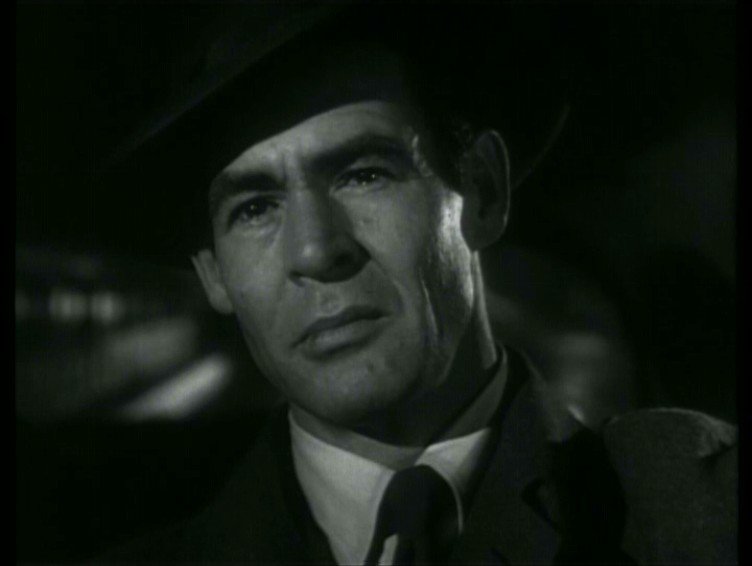
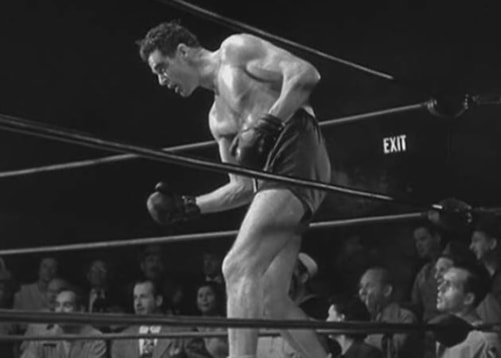
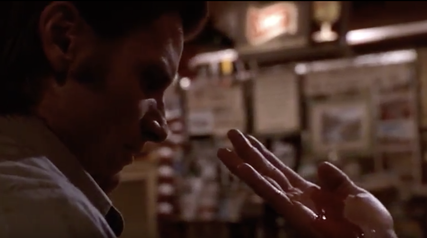
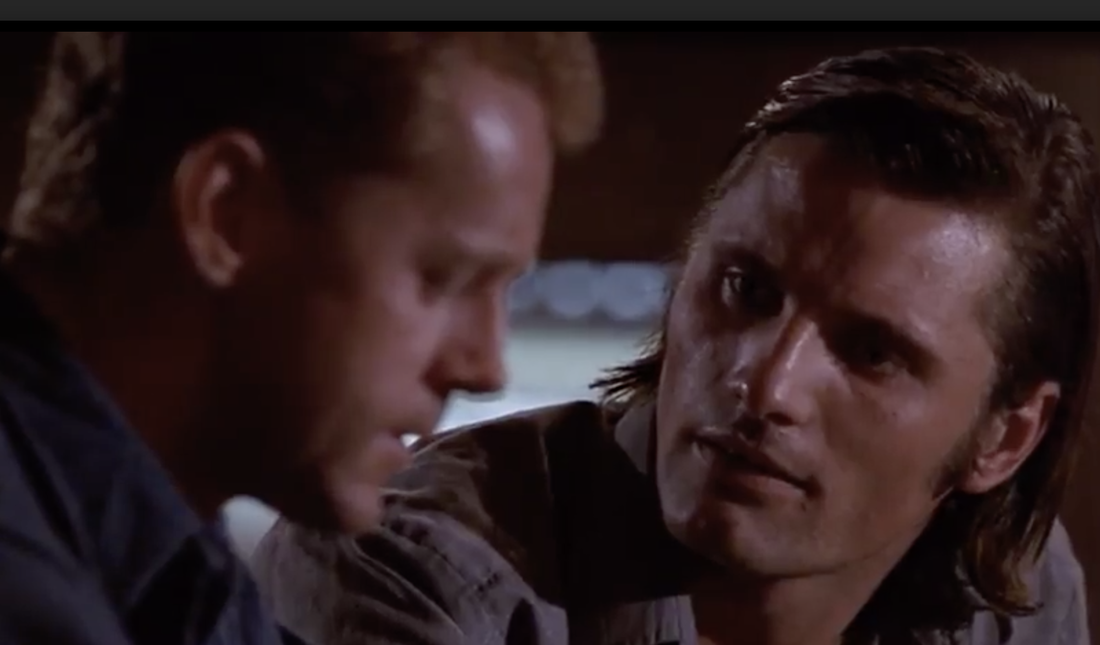
 RSS Feed
RSS Feed
